AT&T Samsung Focus Flash - Review
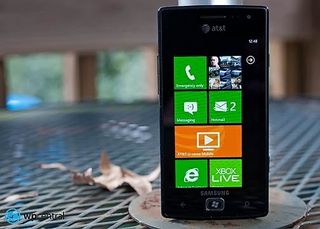
As far as Windows Phones are concerned, Samsung has enjoyed a good bit of success with the Focus. The company recently released two new Windows Phones they hope will enjoy the same amount of success, the Focus S and Focus Flash. We first turn our sites first to the Focus Flash.
The Focus Flash is one of the more compact Windows Phones available and follows the same design of Samsung's successful, overseas Windows Phone the Omnia 7. Sporting a 3.7" Super AMOLED screen the build quality of the Flash is very good and the phone fits snugly in your hand. While the Flash makes a very good first impression, the compact size may not appeal to everyone. There's not a lot of elbow room with the on-screen keyboard and I often found myself activating the Search or Back Button when I held the phone too tightly.
Another concern with the Flash is the amount of storage space available. The Flash is fitted with 8GB of storage and once you've loaded all the software, only 6.33GB of storage remains. Many will find this unappealing in that they will have to be more selective on what is loaded onto the Flash.
The performance, build quality and price does make the Flash an attractive Windows Phone but the reservations illustrate what may be the state of Windows Phones today. There simply isn't a bad phone out there, it's just a matter of finding which fits your needs, budget or tastes the best. If you like a more compact feel to your Windows Phone and storage isn't an issue, the Flash will do nicely.
To read more on the Flash, follow the break.
| Design: Compact. Small. Maybe even tiny to some. Buttons laid out nicely and the physical Start Button is a plus. | Feel: Compact but comfortable. The curved sides to the Flash only adds to the compact feel and makes the Flash a very pocket-able Windows Phone. |
| Performance: Screen comes across as dim at times but still has nice colors and contrast. Windows Phone 7.5 moves along nicely with the 1.4ghz processor. | Quality: The Flash is a solidly built Windows Phone that will appeal to many. |
| The Flash feels good in your hand, will fit your budget better than other Windows Phones, has all the bells and whistles (gyros, compass, front facing camera) and is a solid performer. | While the Flash fits comfortably in your hand, some may find it too compact for their tastes. 8GB of storage may also be limiting to some but others may not see this as a problem. |
| The Focus Flash joins the HTC Radar as an entry level or budget Windows Phones. The Flash is more compact than the Radar and while the smaller size may not appeal to everyone, we found the Flash to be a solid performer. If you're looking for a compact, pocket carry Windows Phone that won't break the bank, the Samsung Focus is worth checking out. |
Design
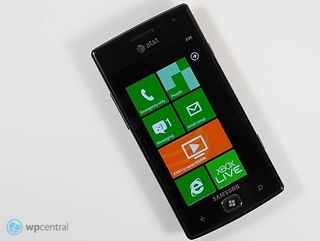
My first thought in removing the AT&T Samsung Focus Flash from the box was "that's a compact phone". Having used the HTC HD7S for the past month, the Flash felt tiny. But after handling the phone for a little while the compact feel took root.
Get the Windows Central Newsletter
All the latest news, reviews, and guides for Windows and Xbox diehards.
Measuring 4.57 x 2.31 x .43 the Flash is .27" shorter than original Samsung Focus which measures 4.84 x 2.56 x .39. The square corners and curved edges gives the Flash a smaller, almost tiny feel. Weighing 4.1 ounces the Flash has some heft to it but not enough to make weigh the phone down.

Working around the Flash you have the power and camera buttons resting on the right side of the phone; the volume rocker to the left; your 3.5mm headphone jack sits up top and the micro USB slot is to the bottom of the phone. Button controls are large enough to manipulate without having to contort your fingers to access but small enough to maintain the Flash's compact size.
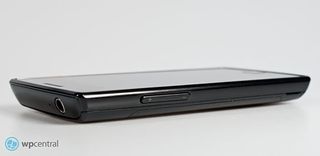
A 5mp camera and LED light is on the back of the Flash and a front facing, .3mp VGA camera sits at the upper right of the phone. The main buttons consist of a capacitive Back and Search buttons with a physical Start button in the center. The Start button is nice but after using capacitive touch buttons on other Windows Phones you'll find yourself not pressing it hard enough. The physical button sits flush enough with the face of the Flash to avoid pocket activations and the button will wake the Flash up (an alternative to the power button).

The design of the Flash may not appeal to everyone and admittedly after using larger Windows Phones as my primary phones, the Flash comes across to me as too small. I did get used to the smaller form factor but prefer something along the lines of the Focus S for my everyday use. The two most notable areas of discomfort came with typing and simply holding the phone. The narrower width of the screen doesn't give a lot of elbow room for typing. You end up doing a lot of finger tip typing where larger phones allow for more of the finger to be used.
With the smaller frame, I found that at times when I held the Flash too tight I would accidentally activate the Search or Back buttons. It's not a case where they sit too close to the edge of the phone's face but rather that my fingers overlap so much that they can easily hit these buttons.

On the plus side, the nice thing about the compact size is that the Flash makes for a very nice pocket phone. The Flash fit nicely in a pants, shirt or jacket pocket.
While I may have reservations on the overall size of the Flash, build quality is very good. The phone feels solidly built with no apparent weak points noted. The battery cover snaps firmly in place and is a combination brushed aluminum and plastic. The cover's fit is firm but not too firm it takes a pry bar to remove it. All in all, the Samsung Focus Flash is a well designed, well built compact Windows Phone.
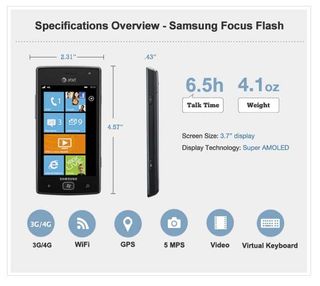
The Screen
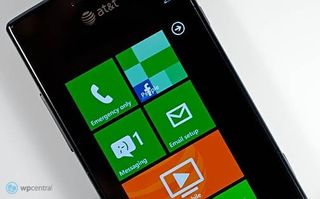
The Samsung Flash is fitted with a 3.7", 480x800, Super AMOLED screen. Colors are crisp, the screen full of contrast and there is nice amount of "pop" to things. Compared to the Samsung Focus, I'd have to give the Flash an edge with the SAMOLED screen. Compared to the HTC Radar, which is has a nice screen within its own right, the Flash has noticeably more contrast to its screen.
There is one oddity about the Focus Flash's screen. It appears dimmer than the Focus. Colors are nice and there's plenty of contrast but the brightness seems 1-2 notches lower on the Focus Flash. We've tried to contact Samsung on this but it's either by design or a bug with the light sensor. A recent update to the Extra Settings may have improved things (either that or my eyes have gotten used to things) but even with the dimmer brightness, the Flash's screen is very nice.
I wouldn't say the dimmer screen is a deal break but rather a difference worth noting.
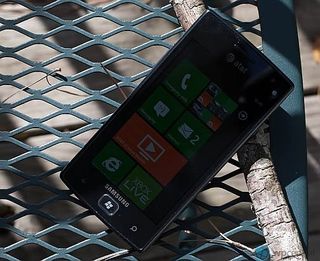
The screen is responsive to the touch and performs nicely outdoors. There were no stutters, pauses, or hang-ups when moving around Windows Phone 7.5 and the screen was very useable outdoors. Every now and then I would get a reflection off the screen that rendered it useless but overall, it performed on par with other Windows Phones outdoors.
Under the Hood
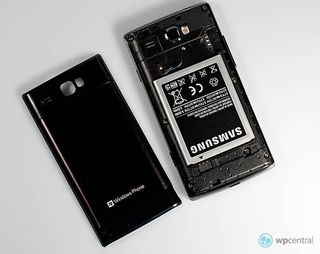
Under the hood the Samsung Focus Flash is powered by a single core, 1.4ghz process that gives the Windows Phone a nice bit of zip. The Flash is also 4G compatible so you get a little bit of a boost in download speeds as well.
Oh...quick side note to the 4G compatibility is that some of the older 3G data packages with AT&T are not compatible with 4G. For whatever reason, my old unlimited data package didn't work so I had to call AT&T to get the right data package in order to enjoy 4G speeds. Now back to our regularly scheduled programming.
The Focus Flash is fitted with 512mb of RAM and 8GB of storage space (a let down to some). When everything is preloaded on to the Flash you are left with slightly over 6GB of available storage. This may not appeal to everyone because you can't load everything under the sun on to the Flash. There is a little bit of a bright side to things though.

AT&T was rather gentle on the pre-loaded software limiting it to the AT&T Software Suite (Navigator, MyWireless, Code Scanner, Radio and U-verse Mobile) and YPMobile. All of which can be deleted to free up more storage space for games, songs, videos and what nots.
The Flash does have second generation hardware items such as the gyroscope and the other Windows Phone goodies such as the digital compass, a-gps, bluetooth, and wifi.
Three quick notes about the Settings... Samsung has the SIM Applications settings we saw on the HTC Radar (but no apps on the SIM) and it also has Extra Settings and High Fidelity Position settings.
We've already touched on the Extra Settings but briefly this includes settings for auto display intensity, key vibration feedback and echo cancellation on calls. The High Fidelity Position sounds like a stereo setting but isn't. Instead it deals with fine tuning your location services. You have the option to use sensor aiding to help with pedestrian positioning and using GLONASS.
GLONASS is short for Globalnaya navigatsionnaya sputnikovaya sistema or mildly put, Global Navigation Satellite System. As best as I can understand things, GLONASS is a Russian version of the U.S. GPS system. It compliments your Windows Phone GPS to enhance location availability.
Everything under the hood of the Flash is powered by a 1500mah battery which easily makes it through the day with moderate to heavy use (email, voice calls, text messaging, internet, etc.).
As far under the hood performance and features, the only potential drawback to the Samsung Flash is the 8GB of storage. Whether or not that's an issue is more of an individual decision. For those who find 8GB of storage enough, you'll like the features and performance of the Flash.
Camera

The 5mp camera on the Samsung Focus Flash captures decent still images and nice video footage. The camera lens has a maximum aperature of f2.5, which does pull in a lot of light but still struggles with indoor shots. The Flash is fitted with a LED light that doubles as a focus assist light and flash. The Flash's flash is your typical led light pretending to be a camera flash. I did notice when you use the flash, images turn out with a blue color cast.
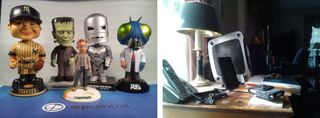

Outdoors the camera performs better and the macro mode isn't too shabby either.


Camera software is par for the course with your customary settings for AF mode, White balance, image effect, etc, etc. You do have the advantage of tapping the screen to capture the image or use the dedicated camera button. The physical button is good but a little on the small side. However, if it were larger the button would probably stick out like a sore thumb.
Video quality is good for a 5mp camera and the front facing VGA camera is equally as nice.
In general the Samsung Focus Flash has a nice camera that may be a notch above par when compared to other cameras. What may be the biggest challenge with the camera has nothing to do with software, image processors, or lenses. With the Flash being smaller than your average Windows Phone, it is really easy to obstruct the lens with your finger. Once you get accustom to holding the Flash by the sides, this becomes a non-issue. Until then, expect to have your finger appear in a few pictures and videos.
Phone Quality
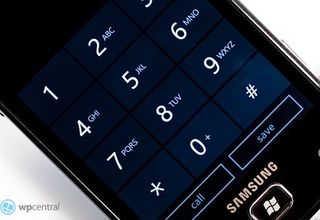
Phone quality on the Samsung Focus Flash was nice. Caller volume was respectable, speaker volume alright (could be boosted a little) and the microphone picked up my voice nicely. Only one issue stood out with the Flash and its performance as a phone.
Every now and then, I'd get an echo from the earpiece when on a call. The echo didn't effect the call quality on the receiving end but was a little on the frustrating side on my end. I know. Your first thought is to have me turn the echo cancellation on in the Settings Menu. Even with the echo cancellation on I experience an echo from time to time.
Now to my pet peeve with phone performance, the vibration alert. The Samsung Focus Flash has an interesting vibration setting. Have you ever heard a large fly buzz when it's trapped between a screen and window? Or that buzzing sound a light saber makes as it slices through the air? Add a little bit of an echo or reverb to that sound and you've got the Flash's vibration down to a T. It's unique, somewhat effective but still has room to grow.
Even with the occasional echo, the Flash's performance as a phone will cut mustard.
Summing it all up
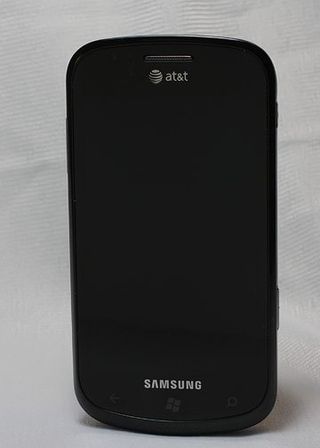
The Samsung Focus Flash is a respectable addition to the Windows Phone line-up. The Samsung Focus Flash's pricing points places the Windows Phone in an entry level or budget phone when compared to other Windows Phones such as the HTC Titan and Samsung Focus S. AmazonWireless is offering the phone for $.01 under contract and $339 out of contract.
But while the Flash may be more budget friendly than other Windows Phone, it also adds a more compact option to the line-up for those who prefer smaller phones. The Flash also doesn't skimp on the features by including the gyro and digital compass. Call quality is nice, screen quality is very good and the presence of a physical Start Button has its own appeal. While the Flash is a solid performer, it isn't without reservations.
Fitted with only 8GBs of storage, some may find this to be too limiting. If you're used to loading your Windows Phone down with songs and videos, you may have to be a little more selective. The compact size is nice, especially if you like pocket carry. But some may see the size too small and opt for a larger Windows Phone.
The screen, while impressive, does have the quirk of being a little dimmer at times. It does seem as though the screen's performance has improved (or my eyes have just gotten used to things) over the past few days. If there is a bug in the light sensor, hopefully Samsung can fix it quickly.
Reservations asides, the Samsung Focus Flash is a well built, quality Windows Phone. It may not appeal to everyone but for those in which it does, they'll be very pleased with where Samsung has taken things.
George is the Reviews Editor at Windows Central, concentrating on Windows 10 PC and Mobile apps. He's been a supporter of the platform since the days of Windows CE and uses his current Windows 10 Mobile phone daily to keep up with life and enjoy a game during down time.

